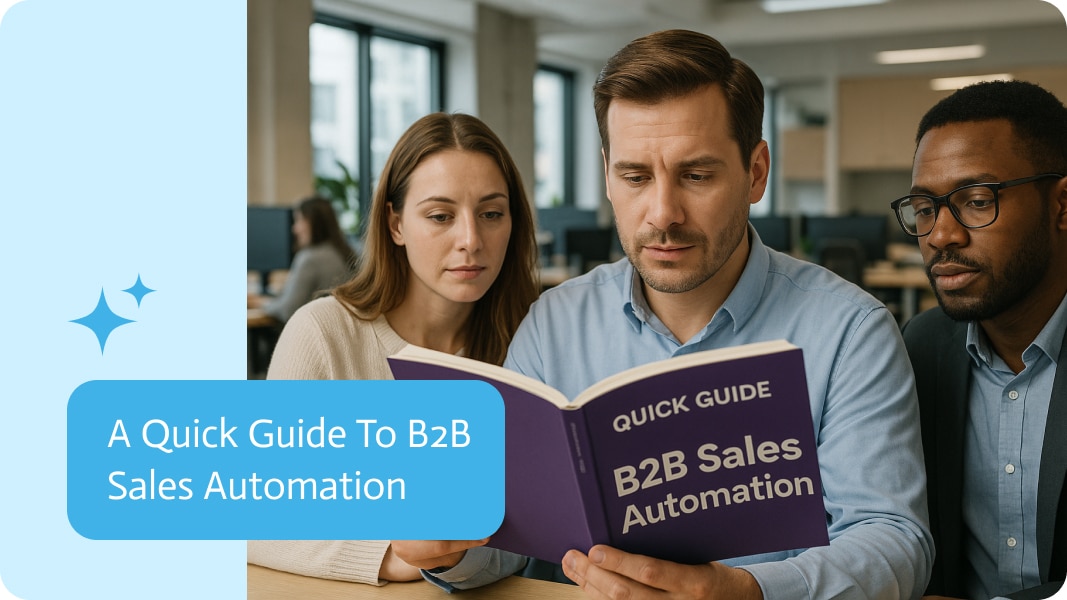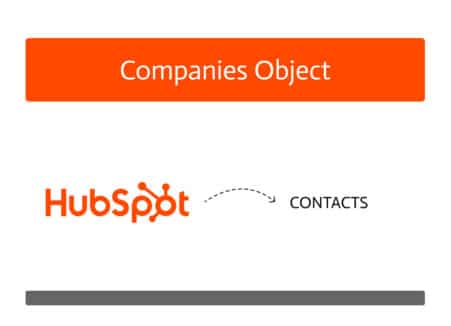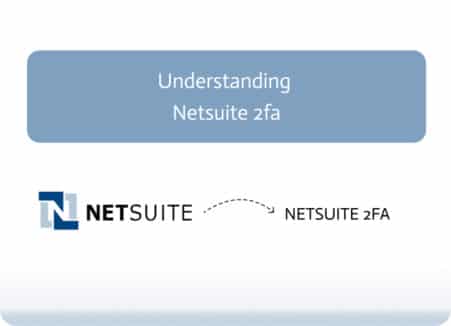

A Quick Guide To B2B Sales Automation
The art of letting artificial intelligence do all the boring stuff so you can focus on growing your business.
What Exactly is B2B Sales Automation?
- B2B (Business-to-Business) This refers to sales from one company to another
- Sales Automation is the act of using software, AI, and tech wizardry to perform repetitive, time-consuming parts of the sales process.
Instead of sales reps having to do everything by hand, like sending follow-up emails, logging calls, entering contact details into the CRM, or deciding who to reach out to next, automation tools do those tasks for them.
Think of it as putting the boring, laborious parts of your sales process on autopilot, so your sales team can focus on what really matters: building relationships, closing deals, and making money.
It’s a lot like having an assistant who never sleeps, doesn’t need coffee, and doesn’t forget to follow up with leads from that webinar you ran two weeks ago.
The Pain Points It Solves
If you’re in B2B sales, you already know the drill. Endless lead lists, cold emails that get ghosted, prospects that disappear after a demo, and your pipeline resembling something that’s been held together with hope and duct tape.
Sales automation doesn’t magically make you close every deal, but it does fix a lot of that stuff clogging up the sales machine:
- Manual data entry? Gone.
- Forgetting to follow up? Not anymore.
- Sending the wrong email to the wrong person? It helps prevent those moments too.
- Leads slipping through the cracks? Sealed tight.
Basically, automation takes the “ugh, this is so boring” moments out of your day so you can turn your attention to the “cha-ching” parts instead.
B2B Sales Automation: What Is It?
By using criteria you specify, such as industry, company size, behaviour, or even website visits, lead generation automation tools can scrape, sort, and score leads. Your CRM can be directly connected to platforms like ZoomInfo, Clearbit, or Lusha, which provide your sales team with up-to-date, pertinent leads.
Types of B2B Sales Automation
Lead Points
Leads can be given scores by sales automation tools according to how “hot” they are. Someone who downloaded a whitepaper after clicking on five links in your newsletter?
By prioritizing follow-ups, you can avoid wasting time on pointless pursuits.
Outreach & Email Sequences
Automated email cadences that adapt to user behaviour can be scheduled. Did they read the initial email? Next, send version B. didn’t even open? Two days later, try version C.
You can think of tools like Reply.io, Salesloft, and Outreach as your outbound robot wingmen.
CRM Management
If you’ve ever opened a CRM and screamed internally, you’re not alone. Automation keeps your CRM squeaky clean, logging calls, tagging leads, updating statuses, and poking reps to do the next best action.
No more guessing games or detective work.
Follow-Up Reminders
80% of sales take five follow-ups or more. Automation ensures that your prospects get nudged regularly without your reps turning into annoying spam machines. These nudges can be customized to feel personal — even though you didn’t lift a finger.
Meeting Scheduling
Platforms like Calendly and Chili Piper integrate into your sales funnel so prospects can book time with reps directly. Fewer “what time works for you?” emails, more conversations that actually matter.
Analytics & Reporting (You’ll Love Data.)
Want to know which emails perform best? Which rep sends the most follow-ups? Where are your best leads coming from? Automation platforms track it all and give you dashboards that actually make sense, no Excel wizardry required.
The Big Juicy Benefits
There are loads of reasons why every company should be considering automating their sales. Take a closer look at some of the most beneficial aspects.
Scale Without Hiring a Small Army
You don’t need 10 more reps. You need better systems. Sales automation lets your team handle more leads, more touchpoints, and more opportunities without breaking a sweat (or budget).
Time Saved = Money Earned
Reps spend less than 40% of their time actually selling. The rest? Admin hell. Automation flips that script, giving reps back hours each week to, you know, sell.
Consistency
Automation ensures that every lead gets followed up, every demo gets a reminder, and every rep stays on script. It’s like your brand’s quality control guardian.
Shorter Sales Cycles
When the right message hits the right person at the right time (without delays), deals move faster. No more awkward lulls between first touch and follow-up #2.
More Visibility, Less Guesswork
With automated tracking, you know what’s working and what’s not. No more flying blind and hoping for the best, because data is your new BFF.
Don’t Fire Your Sales Rep Just Yet
B2B sales is still a people game, but now automation handles the grunt work. It doesn’t replace your ability to build trust, navigate complex objections, or read between the lines on a Zoom call. It just tees you up to do those things better.
It’s not a replacement; think of it as Iron Man’s suit: you’re still the hero, the tech just makes you unstoppable.
Things to Watch Out For
Before you go automating everything that moves, a few cautions:
- Too robotic: Clients may willingly ignore you. Personalization matters, so use automation to scale relevance, not send generic spam at warp speed.
- Bad data = bad outcomes. Make sure your lead data is clean and current. If you’re putting in incorrect information, you’re most likely going to get bad data out.
- Over-automation can backfire. Don’t automate your way out of human connection. The goal is to do more selling, not hide behind software.
How to Begin
Don’t freak out if your sales process still relies on spreadsheets and coffee. Here’s how to take a quick look at automation:
- Examine the way you currently handle sales. What’s taking up time? What is painful and manual?
- Decide which area to automate. Start with something easy, such as lead capture forms or email sequences.
- Select a tool that works well with your CRM. If you don’t integrate, you’re adding tech debt.
- Educate your group. If no one knows how to use it, even the best tool is worthless.
- Take measurements and make adjustments. Observe what is and is not working. Automation is a continuous process.
Final Word: Work Smarter, Not Harder
B2B sales automation isn’t a magic recipe that’s going to fix everything, but it’s pretty close. It helps your team spend less time on the boring stuff and more time closing deals, building relationships, and hopefully hitting their quotas without losing sleep.
So if your sales process feels like pushing a boulder uphill, it might be time to hand the heavy lifting over to your friendly neighborhood bots.


